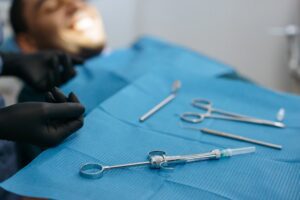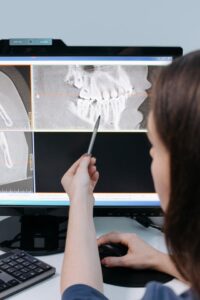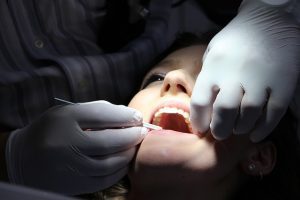We tend not to think about dentistry as a practice that’s thousands of years old. Or we simply don’t know that it is. After all, the Mayans drilling holes in their teeth to permanently implant gems isn’t something you learn in history class. But they did. And they weren’t the first to permanently alter their teeth. Early dentistry is hard to figure out, especially before extensive records were kept, but the first evidence of humans performing dental procedures may be as far as 6000 to 7000 years ago in what is now Pakistan. Some human remains here show teeth that have been drilled with chert tools, probably to remove a blight like a cavity. Fast forward to today and we’re still kindadoing the same thing for cavities. Dental surgery, however? A different story.
China, Egypt and Rome all Performed Oral Surgery
The front runners in ancient dental technology are the usual suspects. In China, people hammered bamboo pegs into the bone where teeth were missing as early as 2000 BCE. In Egypt, though they didn’t practice much (if any) dental hygiene, they did have several ways to fix a smile once it had been ruined. Archaeologists have found skulls from the New Kingdom Period (about 1500-1000 BCE) with a wide array of “surgical” mouth alterations. These include loose teeth strung together with gold bridges, as well as “donor teeth” permanently wired next to natural teeth in the mouth.
The Romans as well, by at least 400 BCE, performed root canals: Archaeologists found a skull in what is now Israel that has a small bronze wire inserted into one tooth’s nerve cavity. Archaeologists assume the wire was inserted to deaden an infected root, since copper alloys have antibacterial properties. But even before the Romans, their predecessors, the Etruscans, carved fake teeth from ivory and wired them into mouths, just like the Egyptians.
And out in the “New World,” there is evidence the Mayans used material like shells to replace missing teeth as early as 600 ACE.
Moving Forward in Time and Dental Technology
Even though people have chewed on twigs and bark to clean their teeth for thousands of years, China is credited with inventing the first natural bristle toothbrush in the 1400’s. The Babylonians had frayed ends of twigs nearly 3500 years before, but China was the first to attach bristles (made of pig cartilage- ew.) to bamboo or bone handles. And since nylon wasn’t invented until the turn of the 20th c., so the modern toothbrush as we know it is barely 100 years old.
Believe it or not, cosmetic dental implants predate the modern toothbrush. Dentists began to experiment with metal fillers and false teeth in the 1700’s. The issue with most metals and oral surgery, though, is that the body rejects almost anything unnatural, especially in places like the mouth. However, one scientist during this time, implanted a pediatric chicken tooth into a rooster’s comb as an experiment, and, much to everyone’s surprise, the dental implant fused with the existing bone naturally.
20th Century Advancements in Oral Surgery
The Strock Brothers are credited with first using a form of cobalt-alloy orthopedic screws for dental implants in the late 1930’s. Over the next few decades, technology for dental implants and mouth reconstruction proliferated. Then, in the late 1970’s, dentists who specialized in oral surgery discovered that bone will grow around and bond to titanium surfaces. This spurred the invention of tooth replacements with root designs – a technology we’ve developed all the way into natural-looking titanium and zirconia dental implants today.
Today: An Era of Fast and Impressive Advancement in Oral and Maxillofacial Procedures
The last twenty years or so have seen advancements in surgical medicine of all kinds. It has allowed oral surgeons like Dr. Puckett to perform an array of surgeries that involve some type of mouth reconstruction. Bone graft technology and the use of “un-rejectable” materials like titanium and zirconia mean modern dental implant surgeries are simpler, much less painful processes. And advances in microvascular surgeries (re-attaching, repairing or regenerating blood vessels and their connections) have allowed for pediatric maxillofacial surgeries like cleft palate repair, as well as surgeries for facial trauma, to become extremely sophisticated in a short time.
So, yeah, barely 300 years ago we were sticking metal into root cavities of missing teeth and watching the bone and tissue around it die as the body rejected it. But now, oral surgeons have the technology and the skill to successfully perform a myriad of oral surgical procedures – anything from same day dental implants to full mouth reconstructions that include both bone and tissue repair.










